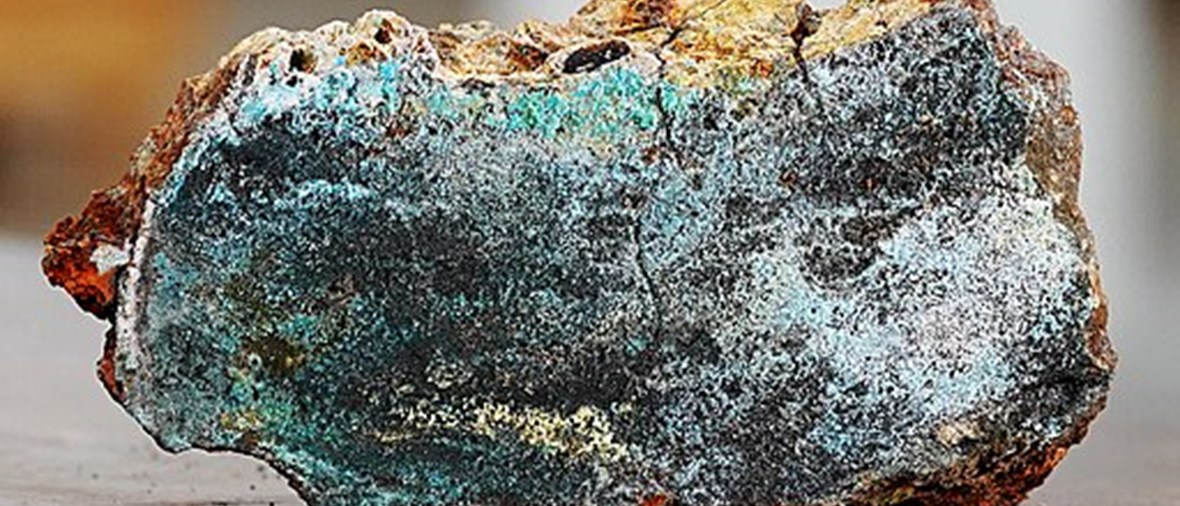What are seabed minerals
These are minerals located on and potentially recoverable from the seabed. Sulphides and manganese crusts have been identified on the Norwegian continental shelf (NCS). Analyses conducted so far by the Norwegian Offshore Directorate show they hold high levels of copper, zinc and cobalt. Manganese crusts also contain such rare earths as scandium, neodymium, terbium and dysprosium as well as cobalt and manganese.
Why should Norway explore seabed minerals?
These deposits contain metals and minerals which play important roles in modern technologies such PCs and mobile phones, as well as for the batteries, wind turbines and electrification in general which are important for the green transition.
Another important consideration is that much of today’s mineral production and processing takes place in a fairly limited number of countries. That could lead in future to uncertain supply lines and create unfortunate ties to regimes we do not want to depend on.
Wouldn’t it be enough to produce metals on land?
By far the largest proportion of metals will continue to be recovered on land. But some minerals are found in such high concentrations and so easily accessible on the seabed that it is likely they can be extracted in a more environmentally, energetically, and climatically beneficial manner.
Would recovery create big particle clouds and much noise in the sea?
Norway is planning to raise these minerals to the surface with the same type of pipes used for oil drilling. These are closed systems, which create little noise and no discharges to the sea. A certain amount of dust from machinery on the seabed can be expected, but efforts are actively underway to minimize it.
Wouldn’t it be better to concentrate on the circular economy?
Achieving circular economies is very important both now and for the future. But many of the relevant metals utilised today will be tied up for years and decades to come in wind turbines, batteries and other elements in the green transition.
A central challenge is that the renewable energy system is far more metal-intensive than current fossil fuel-based systems. This means a much greater demand for various metals to achieve the energy transition.
The world’s population is increasing at the same time as more people move from poverty to middle-class prosperity. That means demand for various metals and minerals will increase even if a fully circular economy is achieved.
Isn’t there a risk of moving ahead too fast?
Opening an area for mineral activities doesn’t mean an immediate start to production. Commercial operations will only begin if the exploration phase demonstrates that it can be environmentally and economically viable.
Before work can begin, the licensees must secure approval of their recovery plans from the government – including a project-specific study of the environmental impact at the relevant site. Such plans will only be accepted if the licensees are able to demonstrate that recovery can take place in a safe, sustainable and environmentally acceptable manner.
How much of the NCS would such production cover?
The area currently opened is twice the size of Norway’s North Sea sector. That’s pretty large, but the acreage likely to be relevant for recovery is expected to be less than one per cent of the total. This is because the mineral deposits are limited in extent.
Will mineral recovery increase CO2 emissions?
No. Mineral recovery on the NCS will be concentrated in areas with little or no sediment containing deposits which could be liberated as CO2.
Will recovery lead to the loss of species?
Seabed minerals won’t be recovered from active hydrothermal vents (black smokers). These are important habitats for highly adapted deepsea species. Active systems are protected and must be left untouched. Both manganese crusts and sulphides will only be recovered from areas where the vents have long since died down, with a very energy-poor and thereby species-deficient environment which is part of an enormously large seabed region.
A more detailed environmental assessment will be required and conducted to ensure that extraction can be done in an environmentally responsible manner.
Could fisheries be affected from such recovery?
Possible future recovery of seabed minerals on the Norwegian continental shelf occurs in areas with minimal fishing activity. There is no reason to believe that seabed mineral activities will have a negative impact on fisheries. Further mapping and dialogue between various industry stakeholders will be conducted in the coming time.
What is the aim of the industry planning to recover seabed minerals?
The ambition is to ensure recovery and processing of these deposits in an environmentally good and profitable manner, and to offer a better alternative to today’s mineral sources.
Will this industry create new jobs?
Exploration and recovery of marine minerals will create the foundation for new jobs and value creation, while ensuring access to critical minerals for the energy transition. This emerging industry will also contribute to the further development of technology and knowledge from offshore and process industries.

